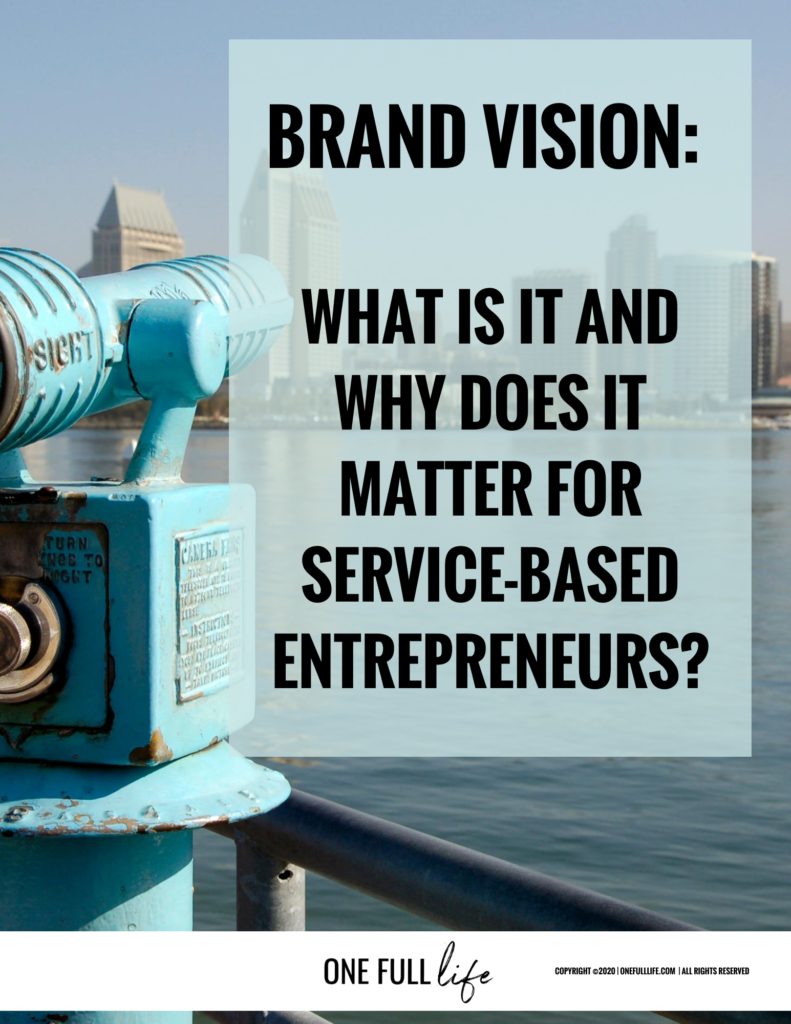I remember sitting in a classroom with about 30 other new employees during the first week of my new job as a marketing manager. After hearing the organization’s brand vision, mission, and core values, the instructor asked for a volunteer to repeat them aloud. Despite feeling a little strange, with my hand raised, the newly-learned phrases suddenly came out of my mouth during the New Employee Orientation.
So, why did it feel a little odd?

Well, those first few days or weeks at a new job are filled with not-so-interesting videos, policies, and what the company stands for.
But, after years of working in both public relations and marketing, I understand that these core statements are “must-haves”. They aren’t just words added to the annual report or every new hire manual.
Branding is much more than just a cool logo or a few marketing ads. It’s the heart and soul of any successful company. A strong brand vision promotes growth and focuses on what matters most.
When was the last time you checked on your brand? Rest assured, if it’s been a while or never, you can follow these steps I created on my blog post, Brand Exercise: Strengthen Your Personal Brand in 20 Minutes. The actions indicate how you’re currently showing up online and if you need to do more.
Whether a company is big or small, everything it does must be an extension of its brand vision, mission, and values. The vision serves as the guiding light for where your business is heading. Being one of the initial steps, it helps shape the business strategy.
What is brand vision?
The brand vision provides long-term, strategic direction and inspiration for the company. The vision statement is usually one sentence, and in some instances, it can be several sentences long. When others experience your vision, they are privy to knowing the good you intend to do in the world.
Ikea demonstrates an excellent example of a clearly-defined vision and mission statement. The Swedish-born company’s vision is “To create a better everyday life for the many people.” The vision statement is short, direct, and aspirational. It also goes beyond home furnishing.
Vision is different than mission
Vision and mission statements can be confusing to many entrepreneurs. The vision statement focus on looking ahead to the future. It shares what the organization wants to become. Your vision statement provides direction for your company. It is the future of the business and shapes the purpose.
On the other hand, the mission statement focuses on your day-to-day operations. It provides more information on what the organization does. Your mission statement drives the company. It relates to what you’re doing. As a result, the mission statement outlines the practical actions you will take to achieve your vision statement.
Although companies may use vision and mission statements interchangeably, it’s vital to have both. Together, they provide purpose and meaning for any business. Both must be present for a company to grow.
Check out Ikea’s business idea, which conveys how the mission complements the company’s purpose.
The importance of brand vision
As an entrepreneur who wears many hats, you may be wondering, “Is it important for me to write out my brand vision?” Since your brand vision connects with every aspect of your business, I believe it is valuable to capture in a written and easily-sharable format.
Your target audience, which includes your ideal client, can understand the following questions:
- Who are you? – a.ka. your purpose or your “Why”.
- Where are you going?
- Why does your business exist?
- How can you help me solve my problem?
- What steps will you take to get there?
Research shows that 77 percent of consumers purchase from brands who share the same values as they do (HavasGroup, 2010). Your brand helps your customers make decisions easier when they understand the purpose. Your brand vision defines your purpose, resulting in client attraction and growth.
It connects you to your purpose
“If you are working on something exciting that you really care about, you don’t have to be pushed. The vision pulls you.”- Steve Jobs
There are a host of reasons why entrepreneurs choose the entrepreneurial journey. My clients are purposeful, conscious, and service-based business owners, coaches, and leaders. It’s no surprise that besides freedom, many enjoy the sense of purpose and making a significant impact in the world.
Therefore, once entrepreneurs identify their brand vision, they are directly connected to their purpose. It’s what causes them to jump out of bed every morning. The idea behind the purpose allows them to continue to pursue their dreams and goals.
Leadership expert, Simon Sinek, developed a purposeful model, The Golden Circle (he’s also the author of Start With Why, which is an excellent book to read, or I like that Alexa can read your Kindle books on any Amazon Echo device.)

The 3 Parts to The Golden Circle:
- What – your offerings (products or services) to your customers
- How – the way you are different from your competitors
- Why – the motivation behind your existence and passion
I mention The Golden Circle approach since it is one way to start thinking about your unique brand purpose in your journey as an entrepreneur. I think you may be surprised how this easy tool by Simon Sinek helps identify the intent behind anything in your professional or personal life.
On the Path to Brand Success
Creating a brand vision is one of the most important things you can do for your business.
Your brand vision helps to guide your decisions and leads your ideal clients in your direction. It shines the light on the path to move your business forward.
But, it doesn’t do it single-handedly. Remember, while building your brand and business, your vision and mission statement work in tandem.
Successful companies are clear on their vision, mission, and values. They stay true to these principles throughout the years. As a result, customers gain trust and connection.
At the end of the day, having a brand vision not only helps to build a world-class brand, but it also helps fulfill your sense of purpose and make a difference in the world as an entrepreneur.
Not sure where to start? You can begin with defining your purpose.
Share your brand vision, and they will come.
Get a comprehensive, step-by-step guide on everything you need to build a purposeful and profitable personal brand as a coach, entrepreneur, or business owner. Click below and grab “The Ultimate Branding Checklist” freebie to take away the guesswork and build a purposeful, profitable brand!
What results have you experienced with sharing your brand vision as a purposeful, service-based entrepreneur?
Share your comments or questions below!
If you liked this post, please share it!

